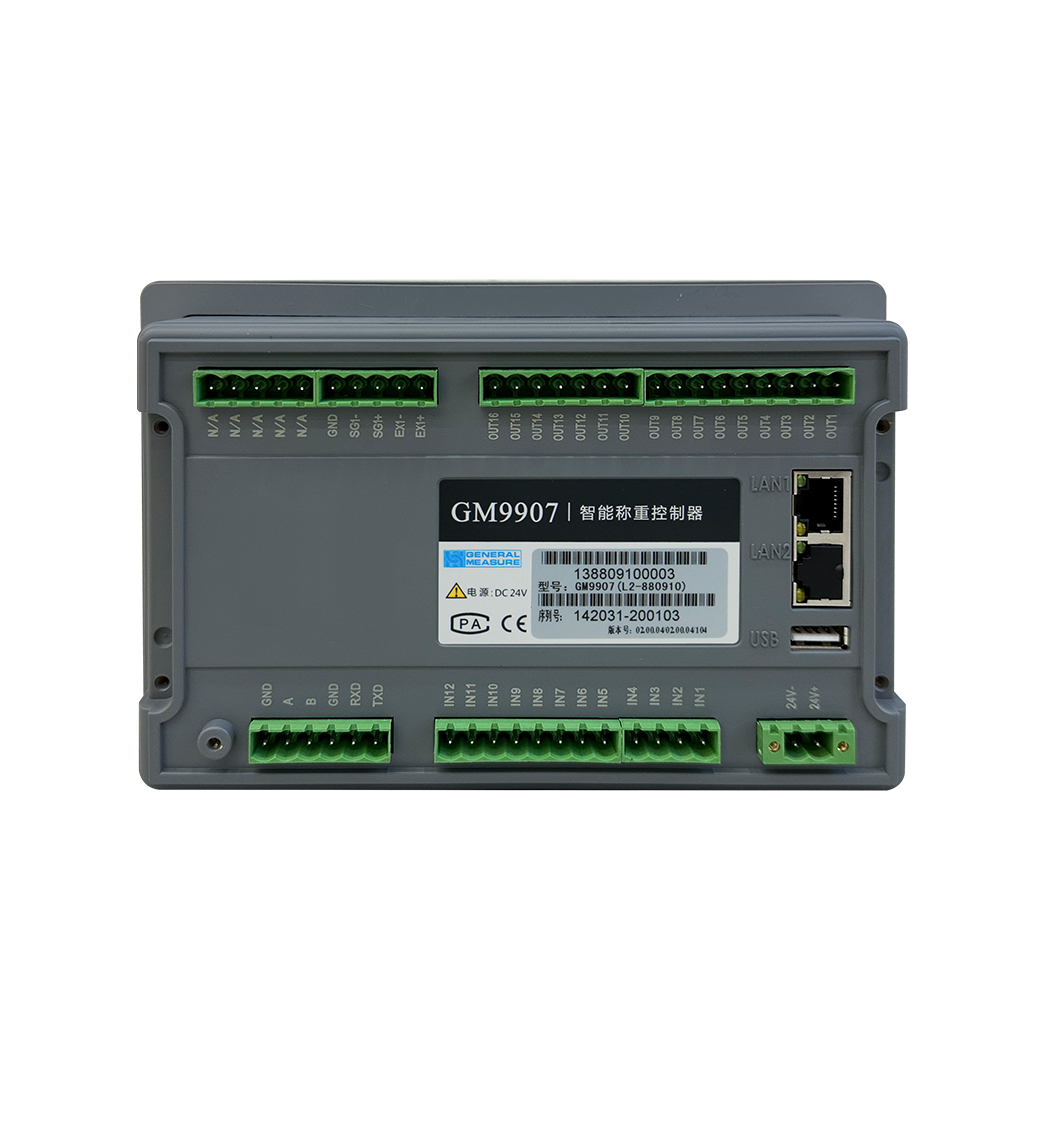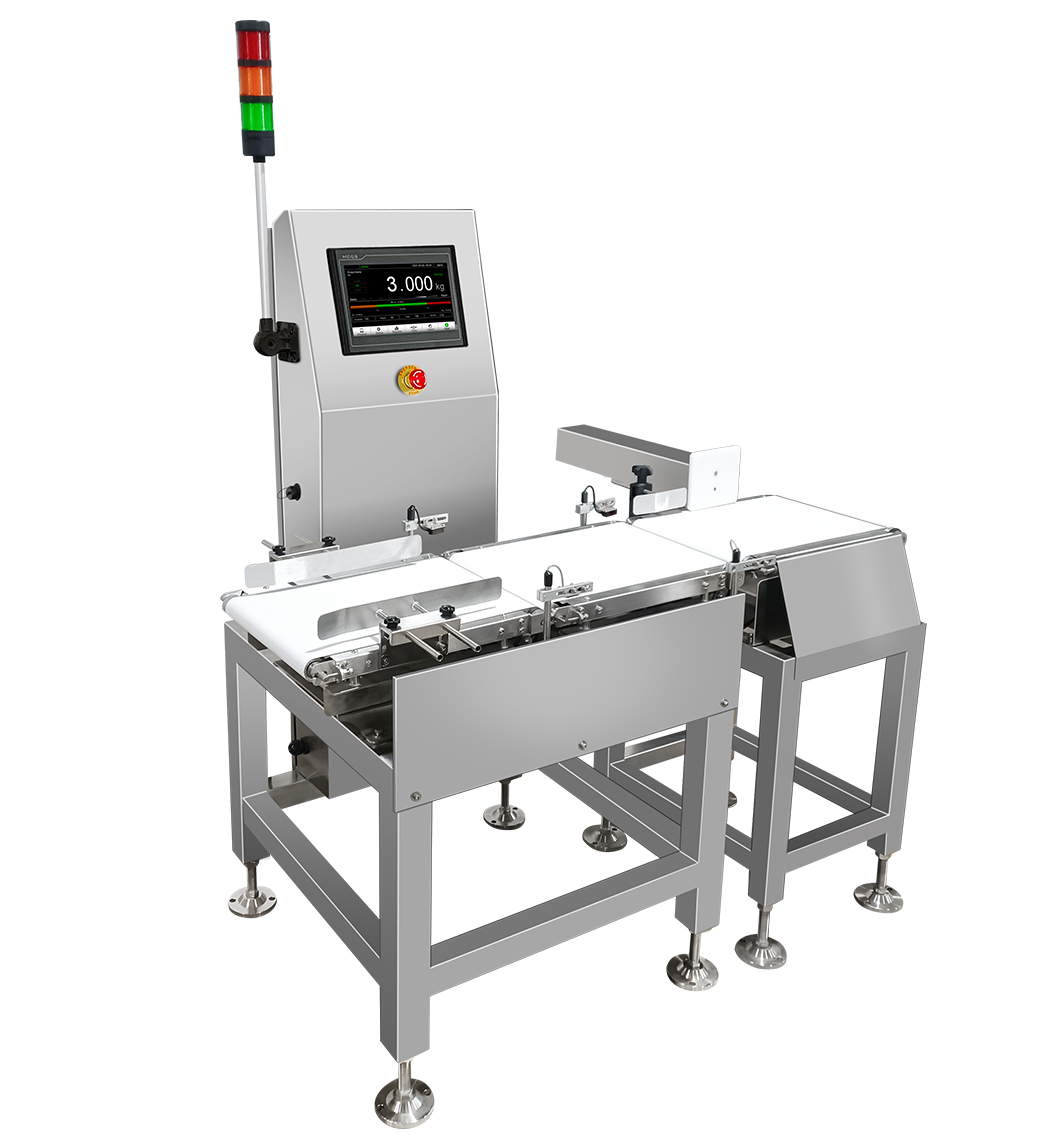Weighing Controllers for Batching and Automatic Checkweighers
Weighing Controllers for Batching and Automatic Checkweighers
In industrial operations where precision is key, weighing controllers play a vital role. These controllers ensure products are measured accurately, production processes run smoothly, and quality standards are consistently met. From batching controllers in food manufacturing to automated checkweighers in packaging, weighing controllers have become integral to industrial automation.
What is a Weighing Controller?
A weighing controller is an industrial device that measures, monitors, and controls weight-based tasks in production. It’s commonly used in applications that require precise measurements, such as batching, filling, and quality control. Weighing controllers gather data from load cells or weighing sensors and then display or process this information, triggering further actions to keep processes in alignment.
Types of Weighing Controllers
Several types of weighing controllers are used in industrial settings, each designed to serve a specific purpose:
- Batch Controllers: For mixing precise quantities of ingredients in industries like food and beverage, pharmaceuticals, and chemicals.
- Checkweighers: Used in quality control to verify that product weights are within specified tolerances.
- Multi-Head Weighers: Common in food processing, these weigh small, precise portions to fill packages.
- General Weighing Controllers: These can serve diverse purposes, from weighing raw materials to monitoring the weight of packaged goods.
Working Principle of a Weighing Controller
Weighing controllers work based on load cells, sensors that measure the force exerted by a load. When weight is applied, these cells send signals to the controller. The controller then processes the data and displays the weight, often triggering specific actions (e.g., stopping the filling process when a target weight is reached). Most controllers are programmable, allowing users to set parameters for different processes.
Applications of Weighing Controllers in Industry
Weighing controllers are essential in various industries:
- Food & Beverage: For batching ingredients, portion control, and packaging.
- Pharmaceuticals: Ensuring exact quantities of active ingredients are used.
- Chemical: In handling hazardous substances with accurate weight control.
- Logistics & Warehousing: For weighing shipments and inventory management.
Batching Weighing Controllers
Batching controllers automate the measurement and mixing of ingredients based on predefined weights. For example, a bakery can use these controllers to ensure each batch of dough has the exact weight of flour, water, and yeast. This automation minimizes human error, boosts production speed, and ensures consistent product quality.
Components of Weighing Controllers
The key components of a weighing controller system include:
- Load Cells: The main sensors that measure weight.
- Display and Control Panels: Show weight readings and allow operators to adjust settings.
- Control Units: Process data from load cells and manage automated functions.
- Communication Modules: Allow controllers to interface with other systems like PLCs or ERP software.
- Software Integration: For monitoring, data logging, and quality control.
Weight Controllers vs. Weighing Controllers
While often used interchangeably, weight controllers focus on basic weight management, while "weighing controllers" typically refer to advanced devices used in specific applications like batching or quality assurance. Weight controllers are ideal for simpler tasks, whereas weighing controllers are preferred for complex, automated processes.
Weigh Controllers for Precision and Efficiency
Weigh controllers enable high accuracy, especially crucial in industries that handle delicate or expensive materials. They are designed to prevent overfilling or underfilling, thereby minimizing waste. These controllers are common in food production lines, where they maintain precise portion sizes, ensuring uniformity and customer satisfaction.
Automatic Checkweighers Explained
Automatic checkweighers assess products as they move along a production line. Each product’s weight is measured in real-time, and the checkweigher flags any item that deviates from specified weight tolerances. This technology is popular in packaging, where products must meet strict weight standards. For example, a checkweigher can reject an underfilled bag of snacks, ensuring consistency in every package.
Benefits of Using Weighing Controllers in Batching
Batching systems reduce human error, ensure precise measurements, and speed up the production process. By automating weight-based tasks, these systems increase efficiency, save on labor costs, and enhance product quality. Industries that rely on consistent formulas, such as chemical manufacturing, particularly benefit from automated batching.
Choosing the Right Weighing Controller for Your Business
Selecting a suitable weighing controller involves evaluating several factors:
- Capacity: The weight range the controller can handle.
- Speed: How fast the controller can process weights, important in high-speed production.
- Accuracy: Precision level, crucial for pharmaceuticals and other regulated industries.
- Connectivity: Ability to connect with other machines or software.
- Software Compatibility: Integration with existing ERP or quality control software.
Integration of Weighing Controllers with Industrial Systems
Modern weighing controllers integrate with ERP systems, PLCs (programmable logic controllers), and quality control software to create a seamless production environment. This connectivity enables real-time data monitoring, process optimization, and predictive maintenance, which helps in avoiding downtime.
Calibration and Maintenance of Weighing Controllers
Regular calibration ensures weighing controllers maintain accuracy. Controllers should be periodically checked and recalibrated according to industry standards. Routine maintenance can also help prevent issues such as sensor drift, which can affect readings over time.
Emerging Technologies in Weighing Controllers
The rise of IoT and AI has brought advancements like remote monitoring, predictive analytics, and self-calibration in weighing controllers. For example, IoT-enabled controllers can send real-time data to cloud-based software, allowing operators to monitor and troubleshoot systems from anywhere.
Safety and Compliance in Weighing Control Systems
Weighing controllers must comply with industry standards like NTEP (National Type Evaluation Program) and OIML (International Organization of Legal Metrology). These standards ensure accuracy, reliability, and safety, especially in industries like pharmaceuticals and food production where weight compliance is critical.
FAQs on Weighing Controllers
How often should a weighing controller be calibrated?
- Regular calibration is recommended every six months or as per the manufacturer’s guidelines to ensure precision.
Can weighing controllers integrate with existing production equipment?
- Yes, most modern controllers can connect with PLCs, ERPs, and SCADA systems for seamless integration.
What accuracy levels do weighing controllers offer?
- Accuracy varies but is generally within 0.1% of the total weight, which is suitable for most industrial applications.
Are checkweighers suitable for high-speed production lines?
- Yes, automatic checkweighers are designed to handle fast-paced environments while maintaining accuracy.
Can weighing controllers handle multiple materials?
- Many batching controllers are designed to handle multi-material recipes, making them versatile in industries like food processing.
What maintenance is needed for weighing controllers?
- Periodic calibration, cleaning of sensors, and software updates ensure optimal performance.
Conclusion
Weighing controllers are indispensable in industrial automation, ensuring accuracy, efficiency, and quality control in every step of production. With advancements in IoT and AI, these controllers continue to evolve, offering smarter, more integrated solutions for a wide range of industries.




Comments
Post a Comment